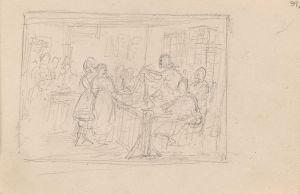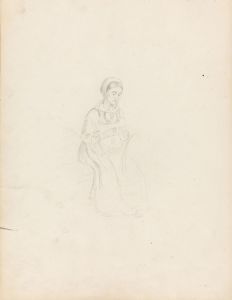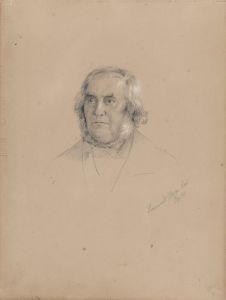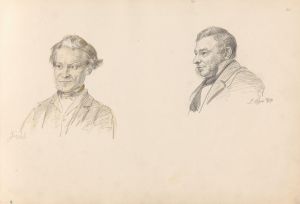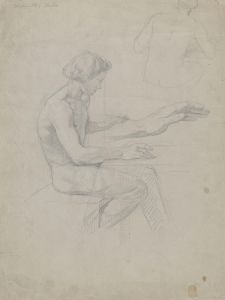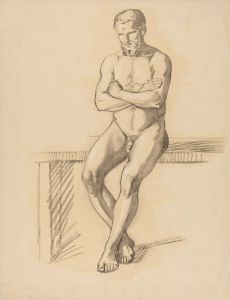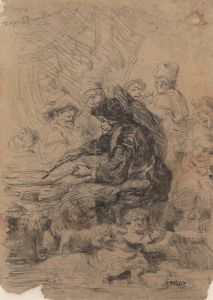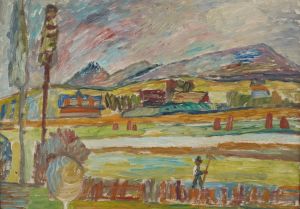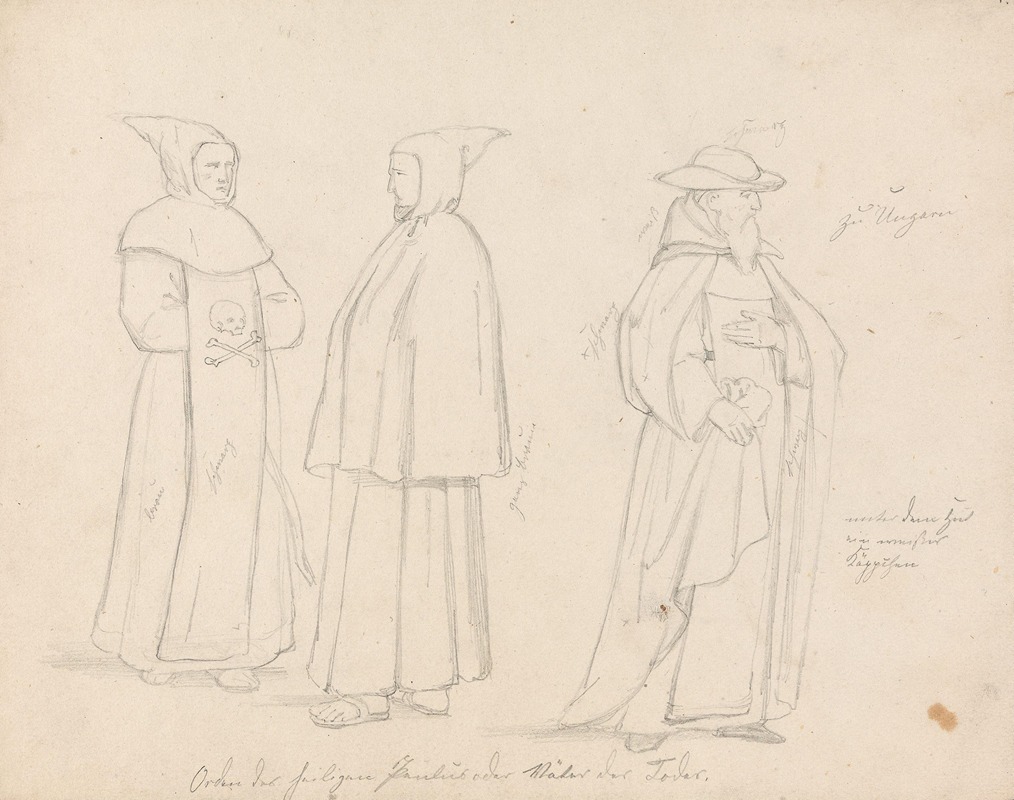
Tre paulinermunker
A hand-painted replica of Adolph Tidemand’s masterpiece Tre paulinermunker, meticulously crafted by professional artists to capture the true essence of the original. Each piece is created with museum-quality canvas and rare mineral pigments, carefully painted by experienced artists with delicate brushstrokes and rich, layered colors to perfectly recreate the texture of the original artwork. Unlike machine-printed reproductions, this hand-painted version brings the painting to life, infused with the artist’s emotions and skill in every stroke. Whether for personal collection or home decoration, it instantly elevates the artistic atmosphere of any space.
"Tre paulinermunker" (Three Pauline Monks) is a painting by the Norwegian artist Adolph Tidemand, created in 1857. Adolph Tidemand (1814-1876) was a prominent figure in Norwegian art, known for his detailed and realistic depictions of Norwegian folk life and history. His works often reflect the cultural and social aspects of 19th-century Norway, and he is celebrated for his contributions to the national romantic movement in Norwegian art.
The painting "Tre paulinermunker" portrays three monks from the Pauline order, a Roman Catholic monastic order founded in Hungary in the 13th century. The order is named after Saint Paul of Thebes, considered the first Christian hermit. The monks are depicted in a serene and contemplative setting, which is characteristic of Tidemand's ability to capture the essence of his subjects with great sensitivity and attention to detail.
In "Tre paulinermunker," Tidemand uses a muted color palette, which enhances the solemn and reflective mood of the scene. The composition is carefully balanced, with the three monks positioned in a way that draws the viewer's eye across the canvas. The background is simple yet effective, providing a sense of the monastic environment without distracting from the central figures.
Tidemand's interest in historical and religious themes is evident in this work. His meticulous approach to painting, combined with his deep understanding of his subjects, allows him to create a powerful and evocative image. The painting reflects the artist's skill in rendering textures and expressions, making the monks appear lifelike and imbued with a sense of spiritual depth.
"Tre paulinermunker" is part of Tidemand's broader body of work that explores various aspects of Norwegian and European history and culture. His paintings often serve as visual documents of the time, offering insights into the lives and traditions of the people he depicted. Tidemand's ability to convey emotion and narrative through his art has earned him a lasting place in the history of Norwegian painting.
The painting is housed in the National Gallery of Norway, where it is part of a significant collection of Tidemand's works. The National Gallery, located in Oslo, is home to many important pieces of Norwegian art, and Tidemand's contributions are among the highlights of the collection. His works continue to be studied and appreciated for their artistic merit and historical significance.
Adolph Tidemand's legacy as a painter is marked by his dedication to capturing the spirit of his subjects and his ability to convey complex themes through his art. "Tre paulinermunker" stands as a testament to his skill and his deep connection to the cultural and religious history of his time.





